More than 40 years after the term ‘e-commerce’ was coined, you could be forgiven for believing that nearly every retail business in Australia would have a website.
If you were to make that assumption about the jewellery industry, you would be very wrong.
One of the most interesting findings during the six-month research phase of the 2024 State of the Industry Report (SOIR) was the startling number of jewellery retailers without a website.
Of the 2,010 independent jewellery stores in Australia, around 600 (30 per cent) did not have a website. Research indicates that of those, around 280 have digital presence via Facebook (14 per cent of the market) while another 55 (3 per cent of the market) use Instagram as their primary digital presence.
The study therefore shows that more than 250 retail jewellers (13 per cent of the market) have no digital presence whatsoever. See table below.
Over the past three decades, consumers have increasingly turned to the Internet for shopping. The launch of eBay and Amazon in 1995, PayPal in 1998 and Apple Pay in 2014 were landmark moments.
The popularity of social media has accelerated this evolution of consumer preferences, with the rise of Facebook (2004), Instagram (2010), and TikTok (2017), each compelling retailers to adapt to this new economic environment.
As documented in Grey areas: Jewellers operating without a store – the two-year global COVID-19 pandemic appeared to be the straw that broke the camel's back.
The viability of jewellery businesses that utilise websites and social media instead of traditional storefronts has become higher than ever. Many of these businesses thrived during the pandemic, discovering new low-cost business models out of necessity and maintaining them despite the pandemic's conclusion.
Indeed, there seems to be a baffling contradiction in play. While many businesses are finding success relying entirely on the Internet, an arguably larger section of the industry appears to be content without any digital presence!
Boots on the ground
These two groups almost seem diametrically opposed — retailers without stores and retailers without websites — yet they have found success in the same circumstances.
Colin Pocklington, managing director of Nationwide Jewellers, was surprised to discover that so many retailers continue to operate without a website.
Nationwide is the largest buying group in Australia, with 299 members accounting for 337 stores.
TABLE 1: THE ROUND FIGURES |
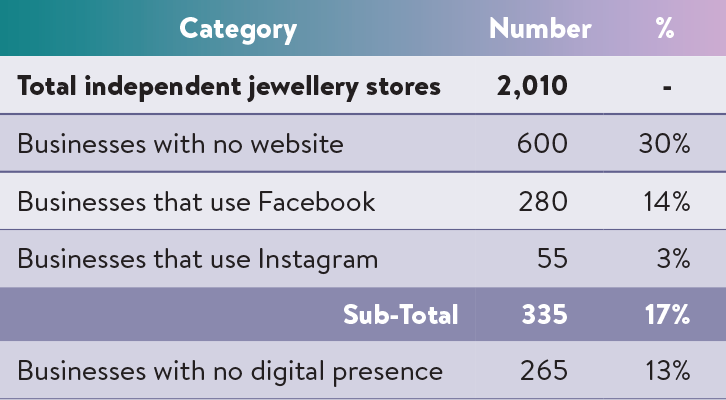 |
He says that while travelling the country and visiting stores, conversations with store owners often begin with the business' online presence.
“Whenever our representatives visit stores in person, websites are one of our focuses. We always check their online presence before we go in and see them in person; it’s a great conversation starter,” he tells Jeweller.
“I was surprised to hear how many retailers still don’t have a website. You really would think that nearly everyone would have one by now.”
Not all those contacted for this report were surprised by the number of jewellers who operated without a website.
Showcase Jewellers is the industry’s second-largest buying group, representing 153 members and 183 stores.
Managing director Anthony Enriques says these figures aligned with his expectations and explains that many jewellers lack confidence regarding digital marketing.
“Those sorts of figures would probably resonate with what we see and hear among our membership," he explains.
"I’ve noticed a lot of hesitation in the jewellery industry when it comes to embracing digital marketing."
He continues: "In other retail sectors, we’d certainly expect to see a higher level of social media engagement.”
Diving deeper
In October, Jeweller undertook a retailer survey, which received responses from more than 200 independent retailers, estimated to be around 10 per cent of the market.
These findings were particularly interesting as they relate to digital marketing.
Retailers were asked the following prompt: My business is now more profitable than it was before the COVID-19 pandemic.
Around 33 per cent of participants answered either ‘strongly agree’ or ‘agree’, a positive outcome given the two-year pandemic that preceded the survey.
More than 37 per cent of participants answered ‘disagree’ or ‘strongly disagree’.
Retailers were also survey on a second topic: My website and digital marketing activities generate a significant portion of sales for my bricks-and-mortar store.
The results to this question were almost perfectly split down the middle, with 33 per cent of responses answering ‘strongly agree’ or ‘agree’, while 32 per cent answered ‘disagree’ or ‘strongly disagree’.
These answers become particularly interesting when the responses are cross-examined.
Among those who answered affirmatively to the first question – indicating that their business is more profitable now than before the pandemic – nearly half (44 per cent) answered affirmatively to the second question.
That is to say, among retailers with businesses that are more profitable following the pandemic, digital marketing is viewed favourably in relation to sales.
This point can also be made by taking the opposite approach. Among those who answered negatively to the first question — indicating that their business is less profitable now than before the pandemic — just 26 per cent had a favourable view of digital marketing.
This might appear to be a conclusion that could be reached without the survey – profitable businesses are more likely to think positively about a common sales strategy such as digital marketing.
However, in light of the number of businesses without a website, it’s an interesting insight all the same.
Why wouldn’t you have a website?
Logically, there are two reasons why a retail jewellery business would not have a website.
Either the business owner feels that they do not need one, or they would like to have one but, for some reason or another, do not.
The most common explanation is the latter. Whether it be because they are unfamiliar with digital tools or lack time, many jewellery store owners simply ‘haven’t gotten around to it yet’.
While it may be unfair to stereotype, age may also be an issue in this regard.
Older business owners are less likely to be familiar and comfortable with digital technology.
There is also distrust in the businesses that offer website development.
Pocklington says that, in his experience, there are four core reasons retailers don’t have websites, “it’s too hard, it’s too time-consuming, it’s too expensive, and I don’t know where to get started,” he says.
“Most retailers without a website will raise at least one of these four points.
"Acknowledging the need for digital marketing is rarely an issue; however, these are the common explanations.”
Enriques says that when addressing the fourth point – confusion about where to begin – it’s important to break it down into three stages.
“You would begin with a static website, something that shows who you are, what your business does, and where it’s located without requiring any maintenance,” he explains.
“The next stage is to start showcasing stock and highlighting the more interesting things the business has to offer.”
He continues: “The final stage would be stepping up to a full e-commerce website, where customers can purchase online and have it delivered without the need to visit a store in person.”
Establishing an e-commerce operation can be daunting and, with more elaborate websites, cost-intensive.
Many business owners do not have the budget to hire a digital marketing manager.
It’s a matter of horses for courses – smaller retailers, particularly those in country or rural locations, rarely require a large e-commerce operation.
With that said, Enriques says that retailers should remain open to the same possibilities.
“Even if you are an independent retailer in a nice sleepy beachside community, maybe you don’t need an entire e-commerce operation, but it’s important to have a digital presence,” he says.
“At a minimum, you should have a website that lets the world know you exist. If, for example, you’re located in a holiday destination, someone might visit your store and see something they like but not purchase on the day.”
He continues: “Time passes, and perhaps that visitor decides that they would like to purchase that jewellery after all. Without a website, that’s a sale you’ve missed out on. Something like that might only happen rarely, but it’s a sale all the same.”
Retirement
Enriques also says it’s essential to be mindful of the average of jewellery store owners in Australia.
With that in mind, reflecting on another question asked in Jeweller’s survey of retailers is interesting. Participants were asked their age, and more than 58 per cent answered 55 or older.
Participants were given the following prompt: I intend to retire or sell my business within the next five years.
More than 38 per cent of responses indicated either ‘strongly agree’ or ‘agree’, while a further 16 per cent were undecided. This suggests that the jewellery industry is amid a period of great change, perhaps a ‘changing of the guard’.
“While there are exceptions to the rule, older business owners are generally less tech-savvy than their younger counterparts and give less consideration to digital marketing,” Enriques adds.
If you’re considering retirement or contemplating selling your business, there may be little incentive to invest the resources required – particularly if your business is already profitable without it.
Choosing to abstain
There exists a smaller group of jewellers without websites, which is arguably even more interesting – those who choose not to have one.
While it’s a strategy that ‘swims against the tide’ in retail trends, there are many reasons why a retailer may choose to have little digital presence.
Perhaps the most interesting point to be made concerns competition and comparison. When a jewellery business is online, it is subject to constant comparison with retail rivals for consumer spending.
While chain stores and independent retailers are unique business models – and many feel that they are competing for different consumers – the products overlap in many areas.
In this regard, the scale of jewellery chains plays a large part. For example, Michael Hill International’s digital marketing efforts support every store in the network.
Each consumer marketing activity that increases the business profile is shared among many stores. Conversely, for independents, efforts to promote the business online benefit that store alone – and in a crowded market, standing out is difficult.
Pocklington suggests that while a handful of Australian retailers may be ardently ‘anti-website’, they are increasingly rare.
“These days, everyone is more or less willing to acknowledge that they need to have a digital presence,” he explains.
“Ten years ago, it was a different story, and many business owners would argue that they don’t need the internet; however, over the past decade, the industry has largely moved past that mentality.”
It’s been said that anything worth doing is worth doing right.
It’s also possible that many business owners are concerned that they won’t have the time, money, or resources to organise a website that’s worthy of their business and products.
Product photography is expensive, and if a business specialises in engagement rings, would you want these products displayed online with images taken using a smartphone? Probably not!
So, rather than launch a half-hearted website that may leave a ‘bad taste’ in the mouths of consumers, they avoid that issue by not having a website.
Enriques offered a different perspective and suggests that this rare breed of ‘traditionalists’ are likely still out there, admittedly in fewer and fewer numbers with each passing year.
“I can’t speak for everyone, and there are many different reasons why a business may not have a website; however, I would say that there are probably a few people out there who simply don’t want one,” he says.
“They might have the budget for a website or an e-commerce operation, but they’ve found their particular niche, sales are good, and they don’t feel the need to go online.”
He said: “It might simply be a matter of a business sticking with what it’s always done well – sitting down at a bench and making beautiful jewellery while speaking face-to-face with customers.”
By abstaining from the ‘digital world’, these business owners can avoid the pitfalls of comparison and emphasise independent retailers' strengths: bespoke and custom-made pieces partnered with strong personalised customer service.
Maybe they’re onto something?
As mentioned earlier, it would seem contradictory that both ‘jewellers without websites’ and jewellers without stores’ could find success simultaneously.
While consumers are increasingly turning to the internet when it comes to spending, certain studies have suggested that the preference for many remains an in-person experience.
The latest Australian Retail Report, conducted by financial technology company KPMG, found that local consumers prefer in-store shopping compared with their US and UK counterparts.
Australians reported that they preferred shopping in person because they wanted to see products up close and needed personalised customer service.
A further 48 per cent of respondents said they specifically attend stores for the customer service provided or to get help when they’re struggling online.
Meanwhile, 34 per cent say they have rediscovered the enjoyment of touching or trying products in a store before purchase, which they had missed during COVID-19 lockdowns.
While these are revealing insights, what should be made clear is that Australian jewellery retailers can find success with or without the internet.
For those capitalising on digital tools, the internet offers access to a wide range of potential customers in a competitive online arena.
For those steering clear of the internet, selling jewellery face-to-face has many advantages that the internet may never be able to match.
The latter are often ‘destination jewellers’; craftspeople whose skill, expertise, creativity and reputation account for far more than the internet can offer.
To them the word ‘like’ refers to the customer’s preferences, or perhaps the quality of their work, and not a social media post.
STATE OF THE INDUSTRY REPORT ADDENDUM EXPLAINED This article is an addendum to the State of the Industry Report published in December 2023. The purpose of the six-month study into the Australian jewellery industry is two-fold – it’s a historical document offering an in-depth examination of the trade from which a glimpse of the future may be obtained. As is often the case with studies of this nature, the research often uncovers unexpected insights. These include significant changes due to advances in technology, the evolution of consumer habits and expectations, and the unforeseen impact of an unprecedented global pandemic. In some cases, the space allocated to specific sections of the report was insufficient because of the additional detail and information obtained. This article is one such case where it was noted that a significant amount of jewellery businesses do not have a website, despite the increasing popularity of social media and online shopping. There is a host of additional information uncovered during the SOIR research period, which was also unable to be included in the initial report due to space and time limitations. Jeweller will continue to publish addendums to the SOIR to analyse and clarify an ever-changing industry. |
STATE OF THE INDUSTRY REPORT
Published dec 2023 - jan 2024
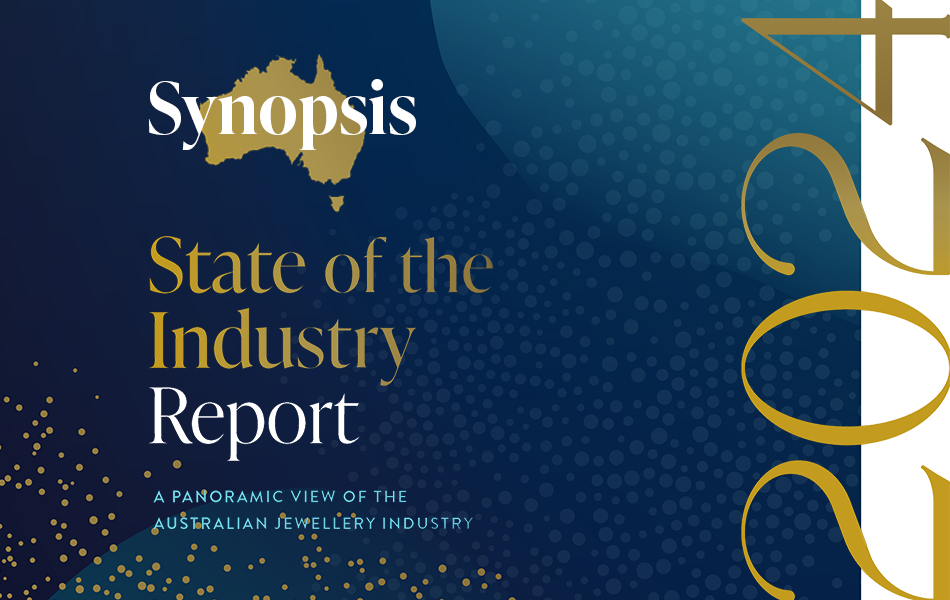 | 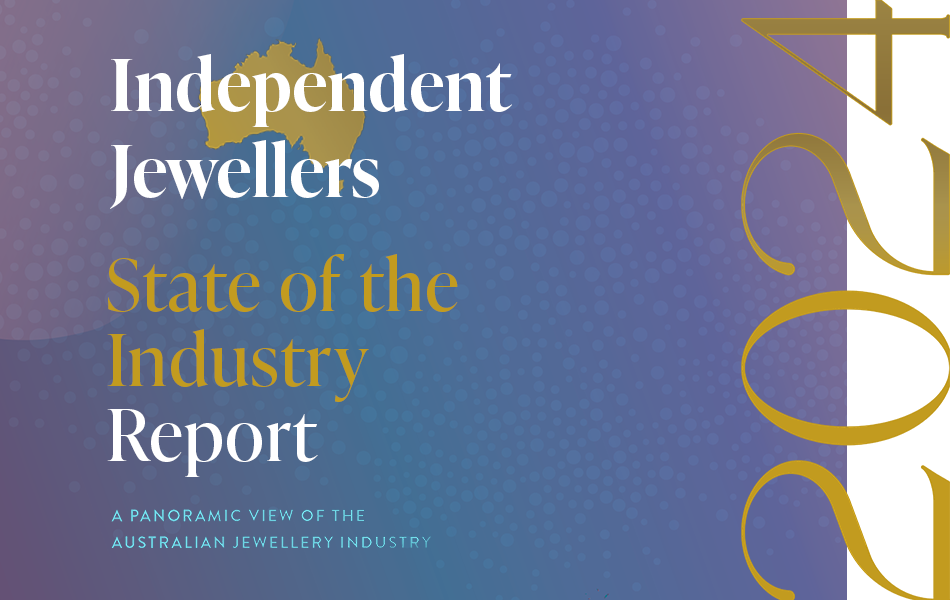 | 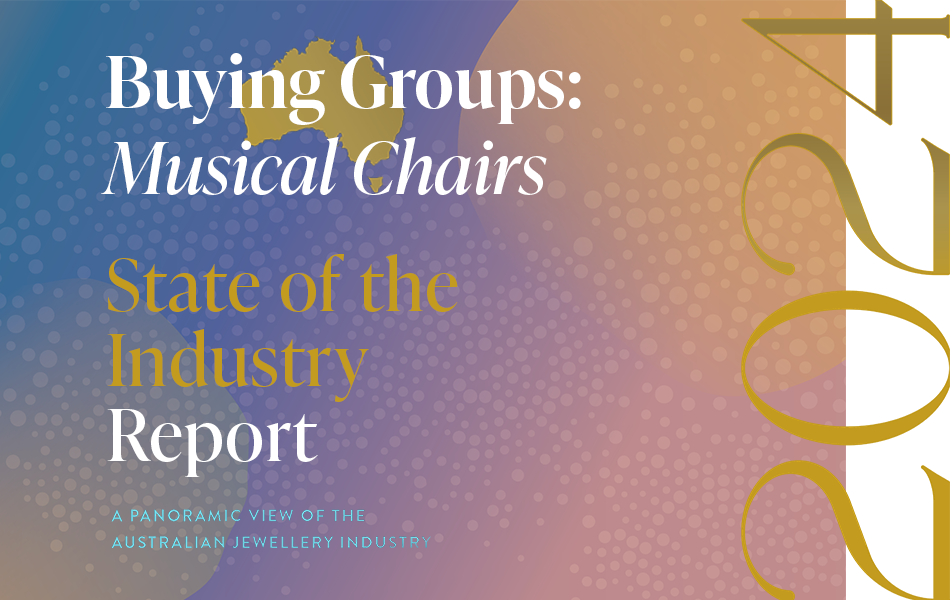 |
A Snapshot of the
Australian jewellery industry
| To better understand the findings of the State of the Industry Report, it's important to be aware of the changes to the industry and how they affect the methodology. |
| Independent Jewellery Stores:
How many are there in Australia?The results are in and you will be surprised.
How has the retail jewellery market fared over the past decade? How does it compare to other areas of the jewellery industry? |
| Jewellery Buying Groups: The ups and downs of this vital sectorThe nature of buying groups has changed significantly in the past decade and there's an important question to be answered.
Can Australia support four buying groups? |
|
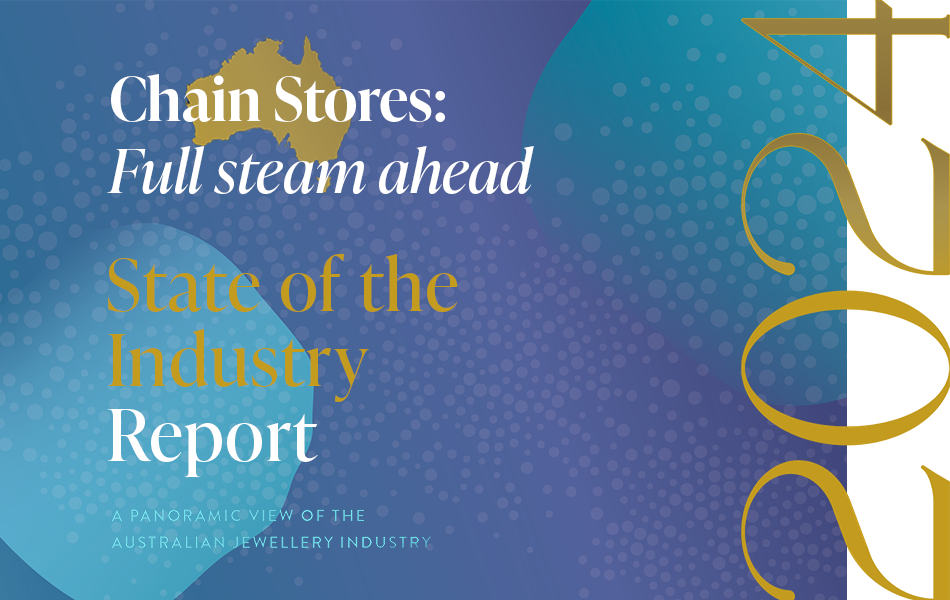 | 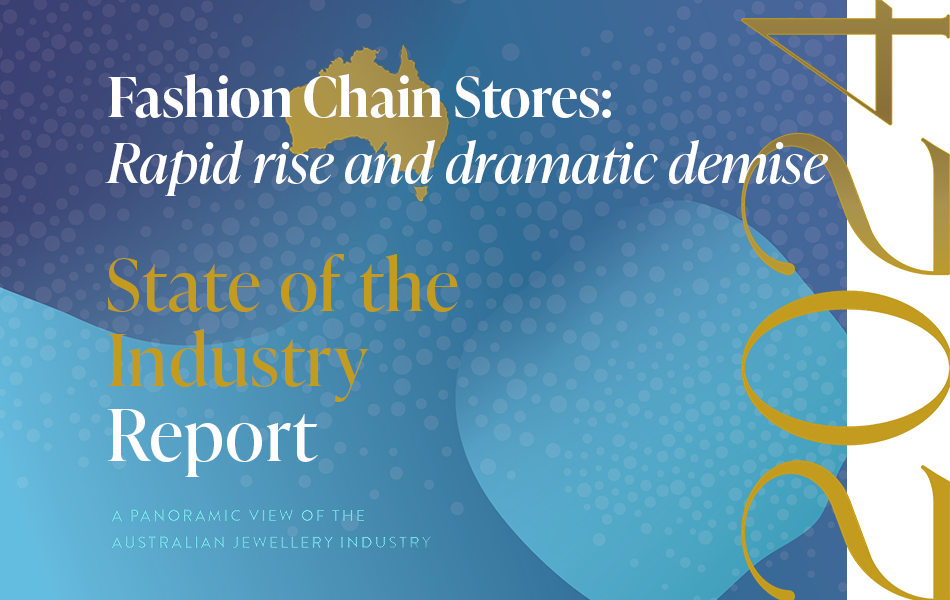 | 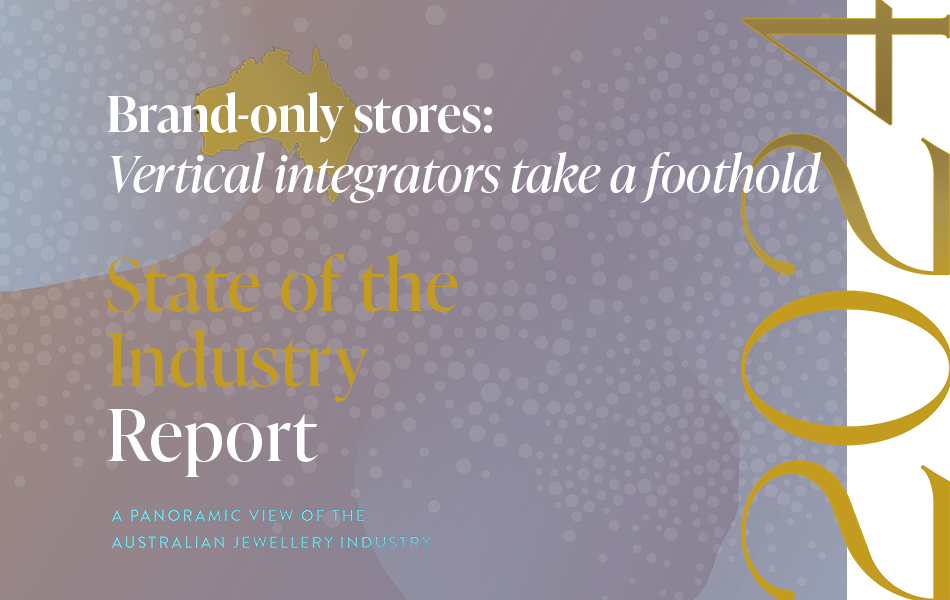 |
Jewellery Chains:
Stronger and stronger... for some!| The fine jewellery chains have performed well over the past decade; however, consolidation could be on the horizon as the 'big fish' look for new customers via retail brand differentiation. |
| Fashion Jewellery Chains:
Examining explosive collapsesThe past 10 years have been a rollercoaster ride for fashion jewellery chains, defined by rapid expansions and dramatic collapses.
That said, the carnage continues in 2024. Is anyone safe? |
| Brand-Only Watch & Jewellery Stores: Is the sky the limit?
| The most significant change over the past decade has been the expansion of the big international watch and jewellery brands as they take control of their public perception via a vertical market model. |
|
 | 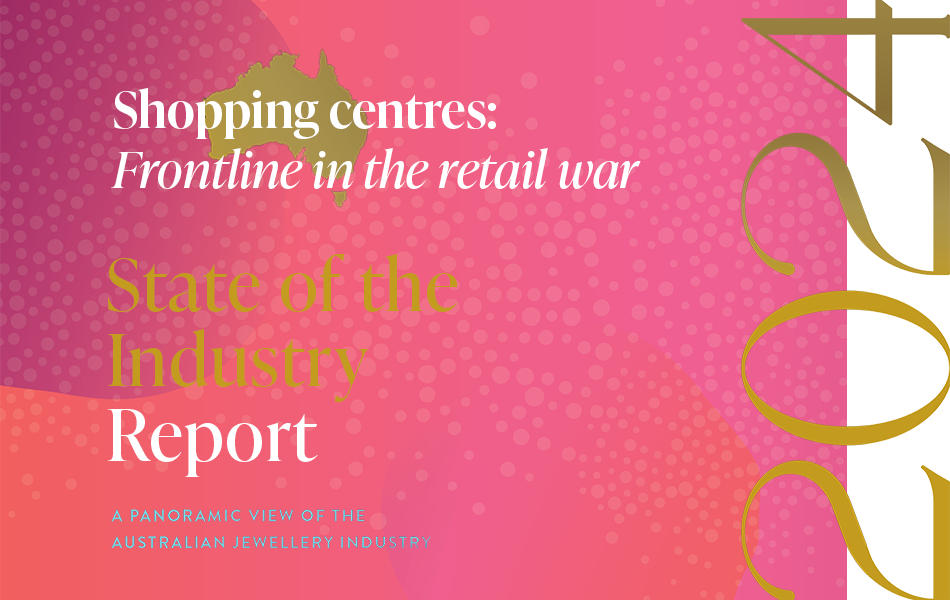 | 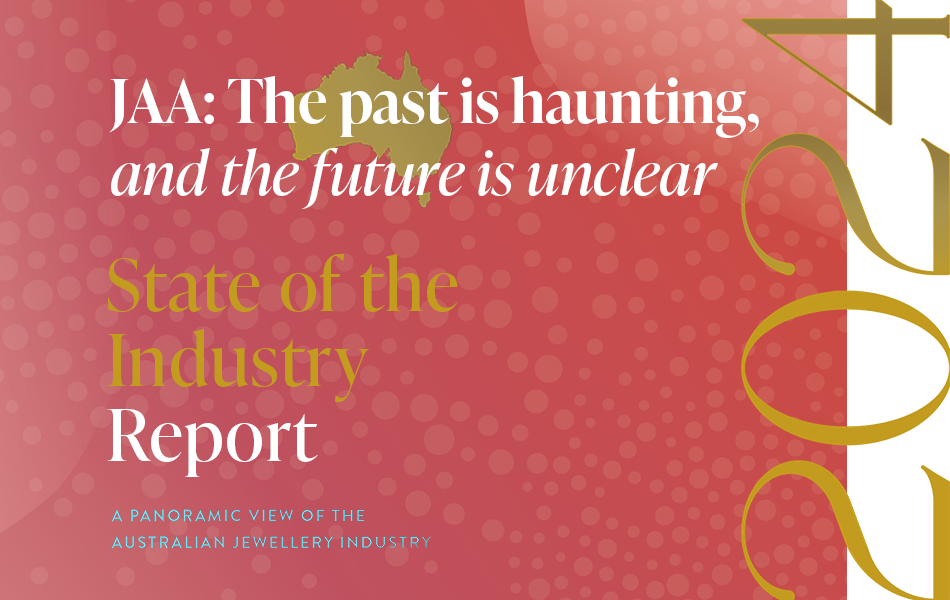 |
Births, Deaths & Marriages:
See you on the other side!
| No market is immune to change and no one escapes death. It’s time to reflect on the 'comings and goings' of the Australian jewellery industry over the past 13 years. |
| Shopping Centre Conflict:
Haven't you heard? We're at war!
| Australia’s shopping centres are a towering figure in the retail sector and fine and fashion jewellery stores have played an integral part in their speciality store 'mix'. |
| Jewellers Association of Australia:
Where does the JAA go from here?
| It's been a brutal decade for the Jewellers Association of Australia and much of the damage has been self-inflicted. Worse, the JAA's missteps don't seem to end. |
|
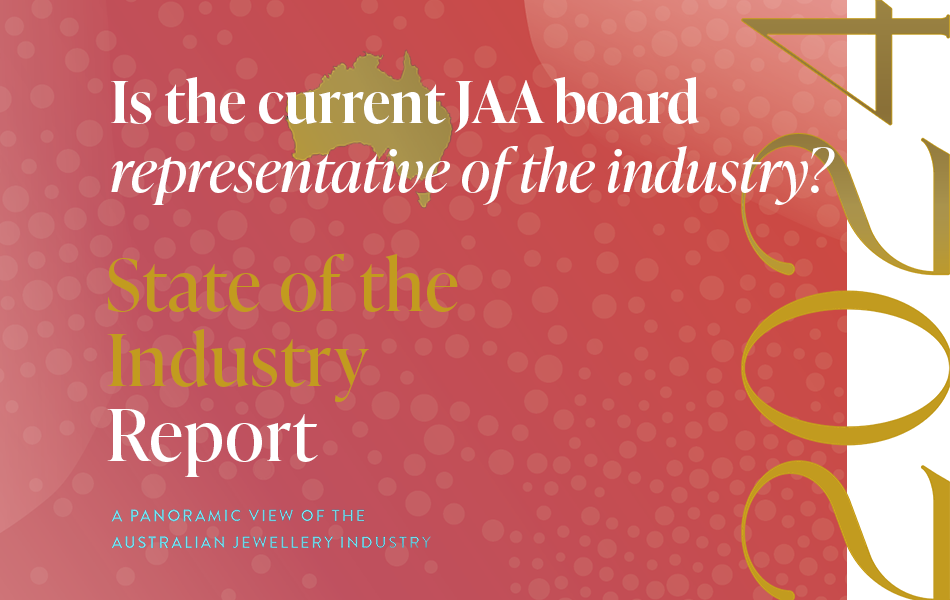 | 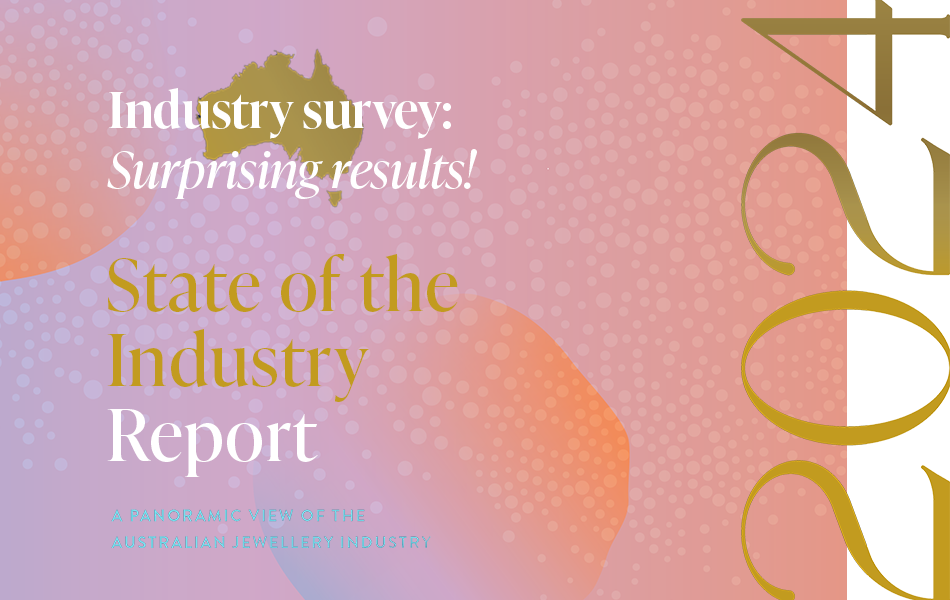 | 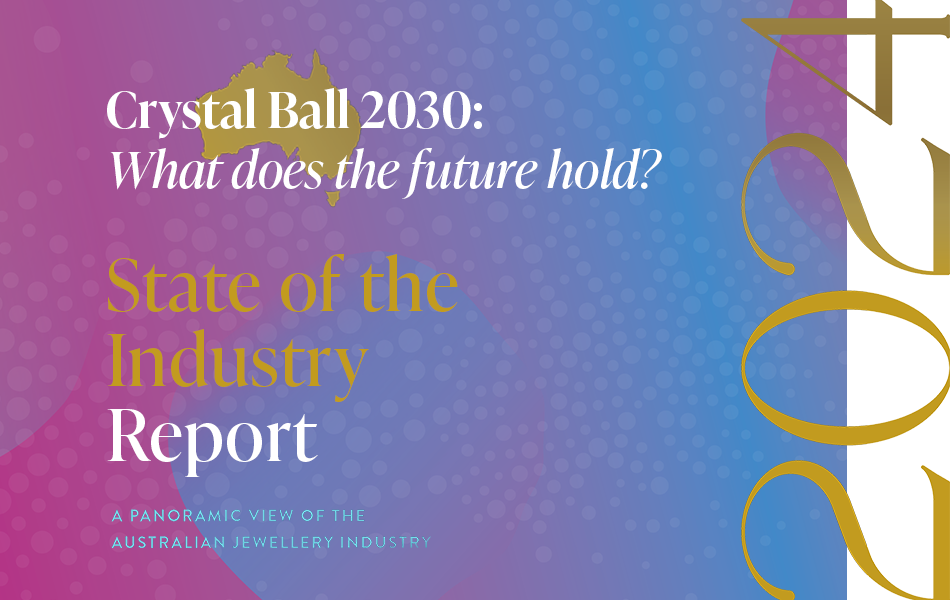 |
Jewellers Association of Australia:
Does it represent the industry? | As membership continues to fall, the JAA is increasingly seen as a club of like-minded people rather than a peak body. |
| Jewellers Have Their Say: Prepared to be surprised and intrigued! | What do jewellers say about the past, present, and the future? A survey of retailers and suppliers revealed fascinating results. |
| Crystal Ball 2030: Bold predictions for the future of retail| Change is inevitable; however, progress is optional. How can your business benefit from upcoming changes in the jewellery industry? |
|
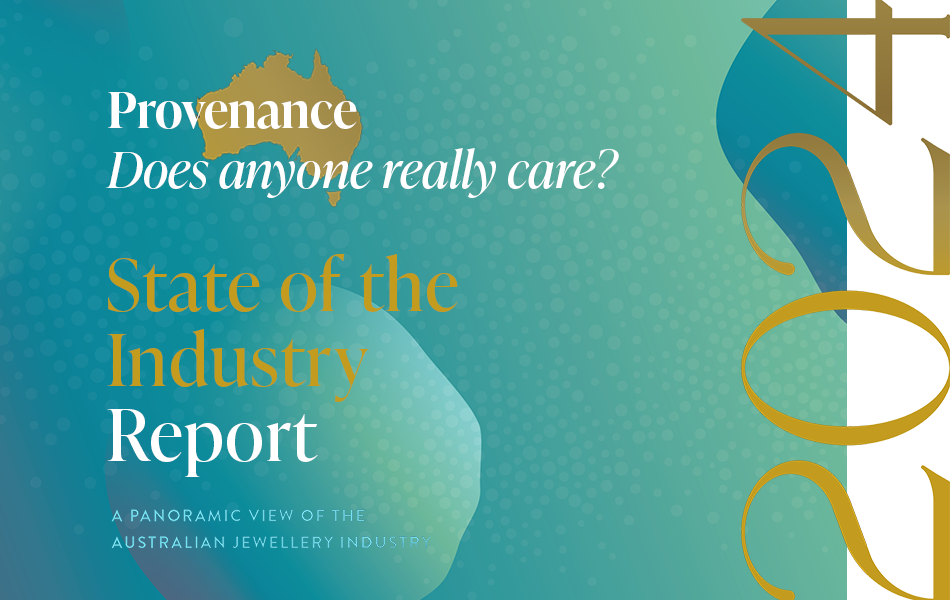 | 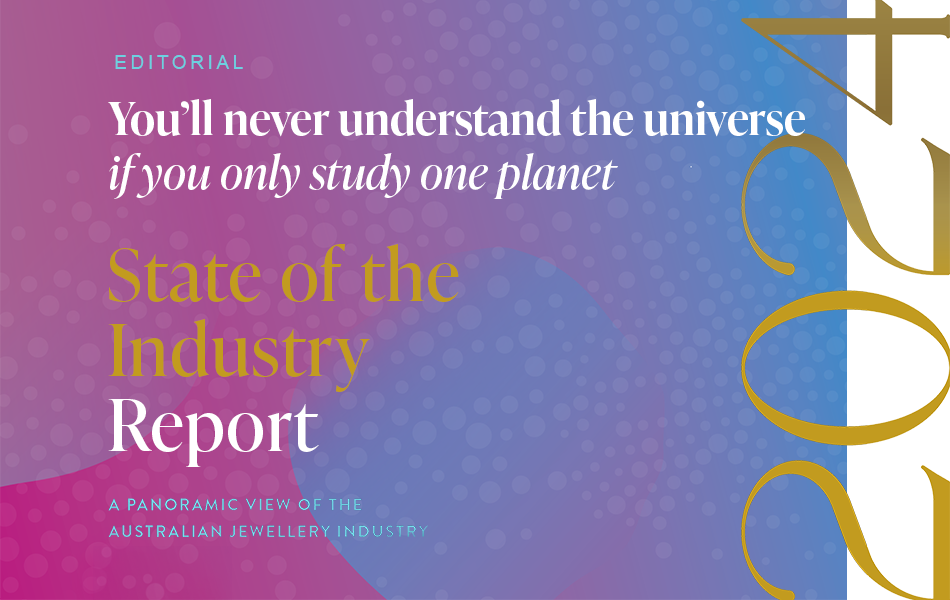 | 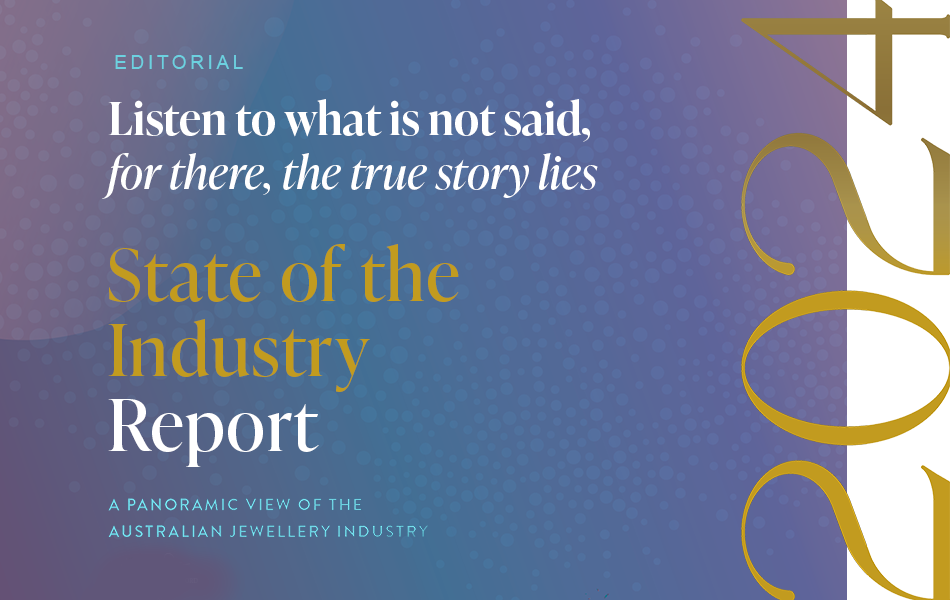 |
Provenance or Proof of Origin: Does anyone seriously care? | Provenance or proof of origin is a hot topic. Conventional wisdom says it's an important issue, but in this digital era it's also important to challenge tradition. |
| You’ll never understand the universe
if you only study one planet | More often than not, the questions are complicated, but the answers are simple. Publisher ANGELA HAN reflects on the creation of the State of the Industry Report. |
| Listen to what is not said,
for there, the true story lies | Editor SAMUEL ORD explains some of the behind-the-scenes work that went into this State of the Industry Report and discusses expectations and reality. |
|
STATE OF THE INDUSTRY REPORT - ADDENDUMS
SINCE JANUARY 2024
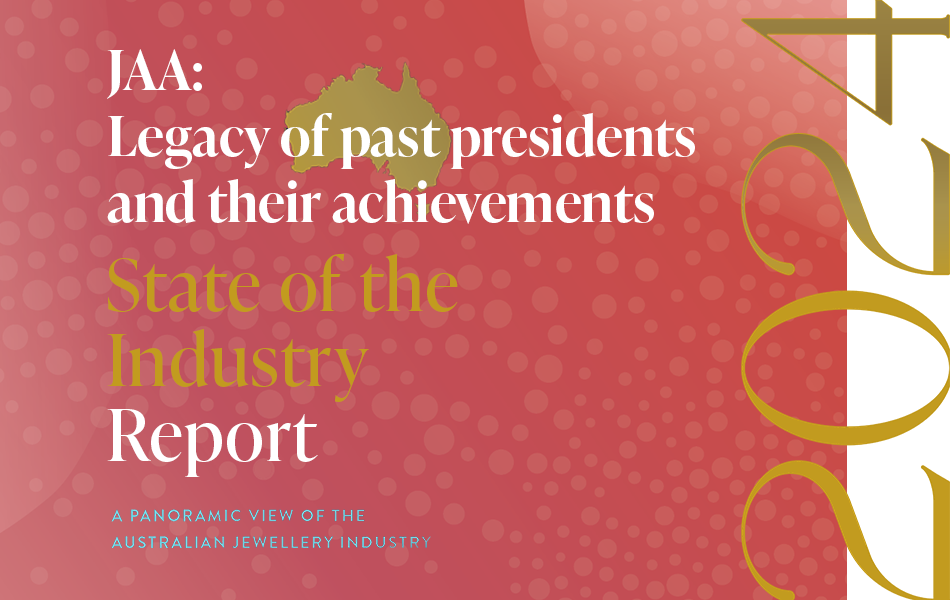 | 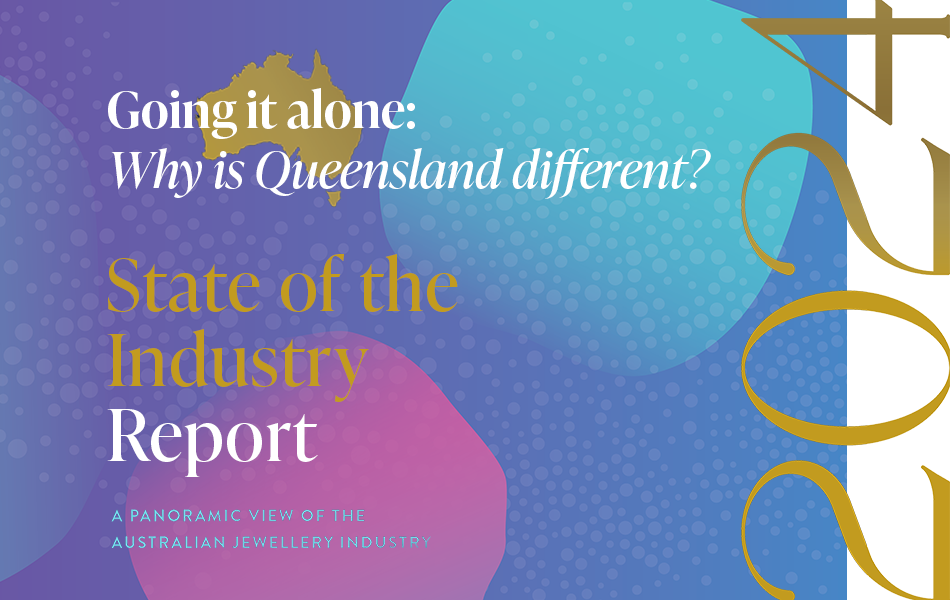 | 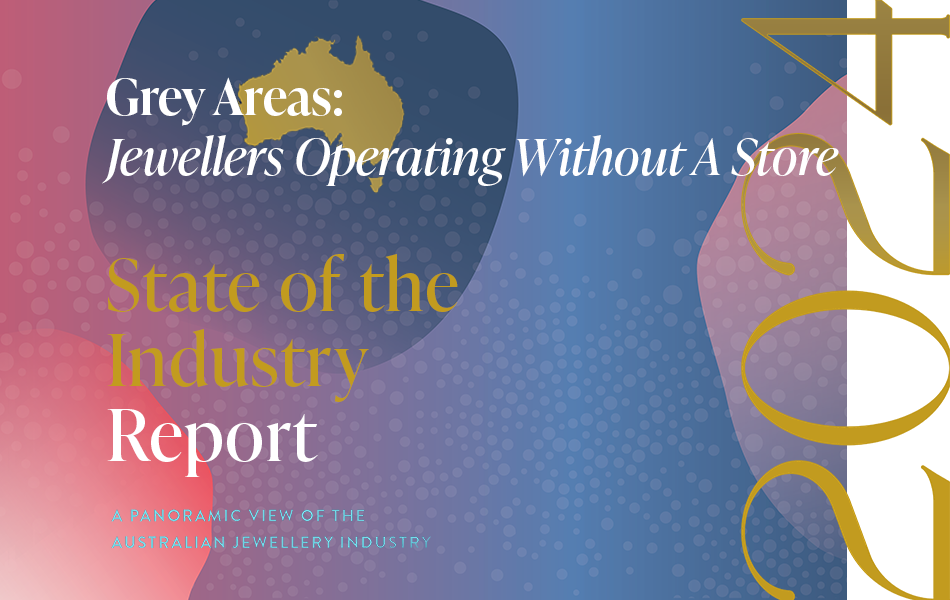 |
Questions of legacy and accomplishment for the JAA| The structure of the JAA is unique, which causes complexity in measuring its success. To look to the future, one must recognise the success and failures of the past. |
| Why is Queensland so different? Well, the answer is: Because it is!| Over the past decade, Queensland's number of jewellery stores decreased dramatically more than any other state. Why? The answers are intriguing. |
| Grey areas: Jewellers operating without a retail storefrontAs trends emerged and consumer shopping habits changed, so too has retailing.
The COVID pandemic probably hastened the move towards specialist jewellers, those that do not require a storefront. |
|
| | 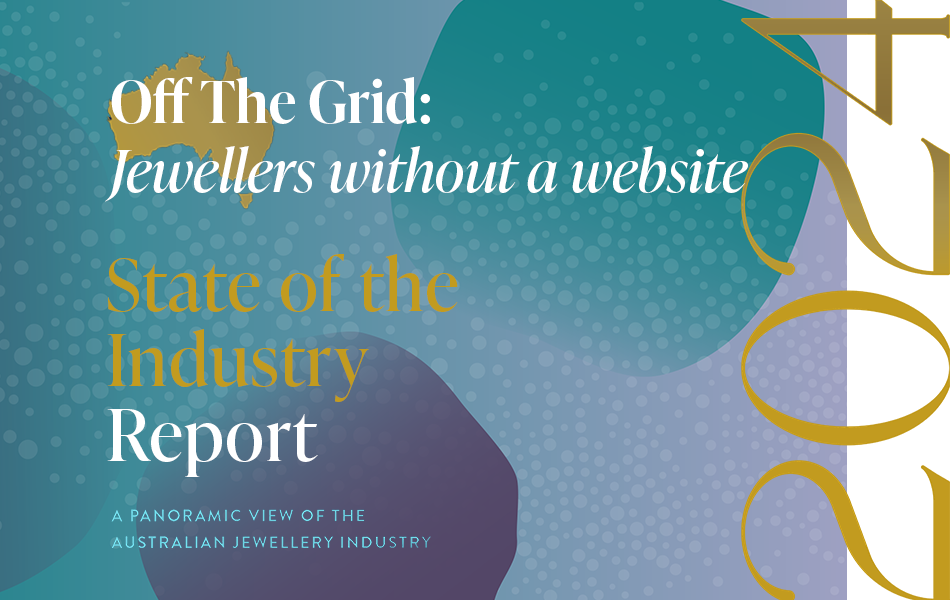 | |
| | WHAT! You are telling me that your business doesn't have a website?| If you had to guess, how many of Australia's independent jewellery retailers don't have a website? Would you say 100, 200, or even 300? How about 400, 500, or 600? |
| |
Hover over eMag and click cloud to download eMag PDF
PREVIOUS ISSUES